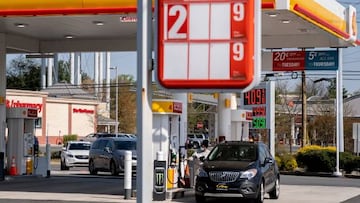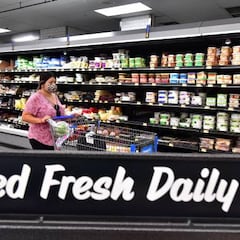$150 gas cards in Chicago: how to get them and how you can apply
The high price of gasoline across the US has forced some states and local governments to consider financial support in the form of fuel ‘stimulus checks’.


Chicago residents can begin accessing a new financial program aimed at easing the cost of travel after months of high gasoline prices have hit consumers at the pump.
The initiative, introduced by Chicago Mayor Lori Lightfoot, will provide tens of thousands of prepaid gasoline and public transit cards from Wednesday, 27 March onwards.
Chicago City Council just passed financing for the #ChicagoMoves program.
— Mayor Lori E. Lightfoot (@chicagosmayor) April 27, 2022
Now approved, Chicago Moves will provide $12.5 million in relief funding for Chicagoans through prepaid gas cards for up to 50,000 drivers & prepaid transit cards for up to 100,000 transit riders. 🧵
There will be 50,000 gas cards worth $150 each, and a further 100,000 public transit cards with $50 pre-loaded, offered to city residents.
Applications are limited to one per household and you can submit your application online. Alternatively, you can apply in-person at any of the city’s many public libraries.
Who is eligible for the Chicago gas cards?
The 150,000 recipients of either the gasoline or public transit cards will be chosen in a lottery once all applications have been received, meaning that no one is guaranteed to receive the financial support.
To enter the ballot, applicants must satisfy the following requirements:
- Chicago resident
- At least 18 years old
- Have a valid city sticker with the correct mailing information for their vehicle
- Have a household income that does not exceed 100% of the Area Median Income
Data provided by the city of Chicago suggests that the median household income for a family of four is $93,200. You can calculate your Area Median Income (AMI) by consulting the AMI Chart on the city’s Department of Housing website.
Will high gas prices continue in the US?
Costly gasoline prices could hamper the United States’ economic recovery if it continues, so central is the price of fuel to the household budgets of millions of working Americans. However with a confluence of factors sparking the recent price increase, a quick remedy seems unlikely.
The federal government is attempting to increase the supply of crude oil, a key component in the manufacturing of gasoline, in a bid to bring down the cost. President Biden has also opened up the use of E15 biofuels, usually banned during the summer months, to ease the supply issues.
I know folks are struggling with higher gas prices. It’s why I’ve authorized the release of one million barrels a day and coordinated our release with allies and partners around the world.
— President Biden (@POTUS) April 27, 2022
It’s the largest release in history and should help ease the pain of the Putin Price Hike.
Related stories
But in the short term it seems like the consequences of the invasion of Ukraine will continue to send fuel costs soaring. Russia has cut off Poland and Bulgaria from its supplies of natural gas, a move which has increase demand in other fuels, such as diesel.
“The cutoff has already drastically raised the price of diesel worldwide,” said Tom Kloza of the Oil Price Information Service, warning that the notion of $6-a-gallon diesel fuel “no longer represents hyperbole.”

